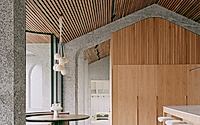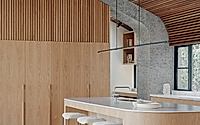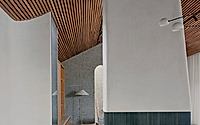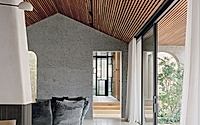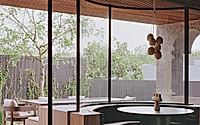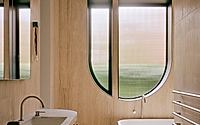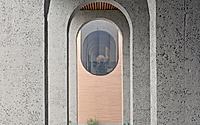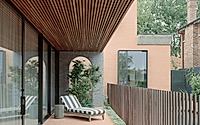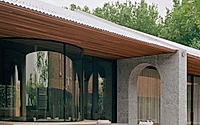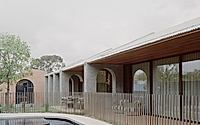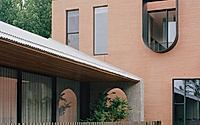Glen Iris House by Pandolfini Architects
The Glen Iris House displays compositional simplicity, bold materiality and intricate detailing with its abstract facade. Located in Australia, the house has been designed by Pandolfini Architects, who have crafted a robust family home tethered to its suburban site. The home features three, tiered pavilions, centred around a barn-like living space, which follows the contours of the long, rectangular site.
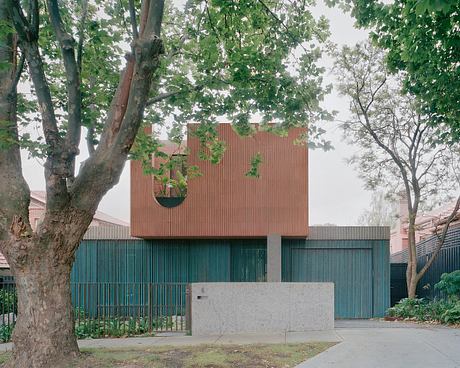
Expressive Geometric Gestures Layered Throughout The Design
Combining compositional simplicity, bold materiality and intricate detailing, Glen Iris House crafts a robust family home tethered to its suburban site. The abstract façade, comprising a patinaed copper screen and cantilevered brick-clad volume, echoes the tones of the local streetscape, while a bush hammered concrete blade wall defines the primary entry — a suggestion of the material narrative that lies beyond.
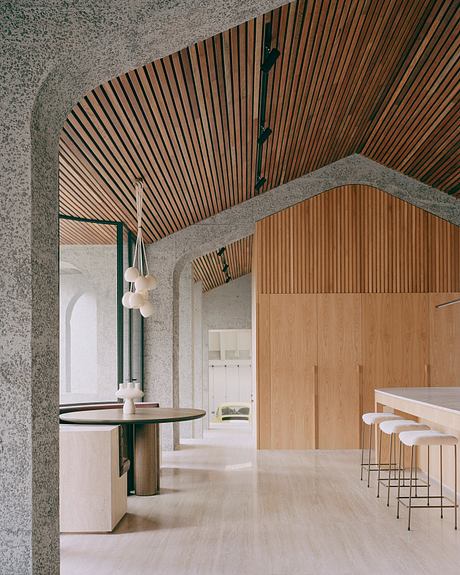
Three, tiered pavilions follow the contours of the long, rectangular site — a central, barn-like living space flanked by private quarters at the front and a garage at the rear, each linked by glazed passages. An exposed framework of bush-hammered concrete ribs extends laterally across the central pavilion, defining a sequence of shared living space internally, and a captivating arched promenade externally.
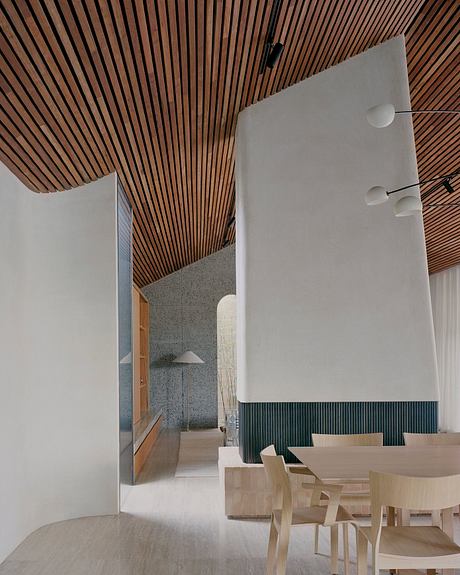
Internal courtyards provide a buffer from the street and western sun, offering secluded retreats for the inhabitants, awash with terracotta tiles and natural stone. The garage pavilion, home to the clients’ cherished collection of classic cars, continues this material and formal logic, binding together interior volumes.
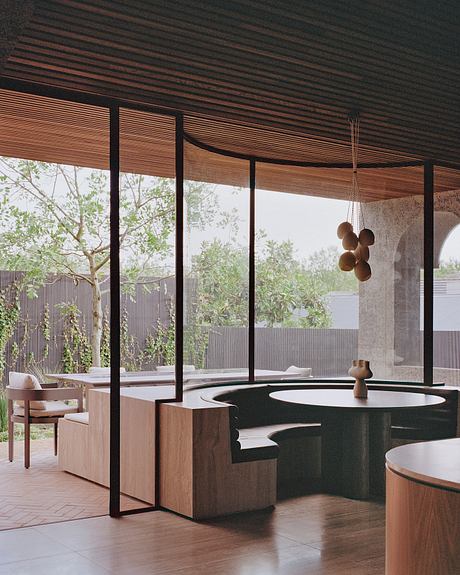
A Finely Detailed Interior Offers Relief To The Raw Exterior
Throughout, the geometry of Glen Iris House is punctuated by expressive gestures, including a sculpted fireplace stack and curved staircase — a spirited celebration of form and material. A patinaed copper screen stretches across the ground floor of the front facade, reinterpreting the surrounding front fences overgrown with greenery but pushed back from the property boundary to create a generous gesture to the street.
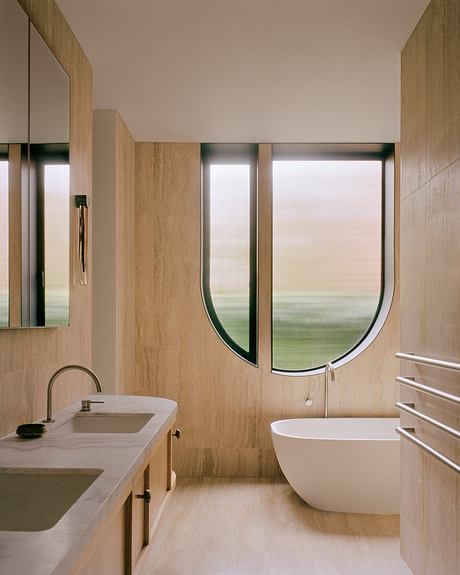
The brick clad volume of the first-floor cantilevers out over the screen and balances on a bush-hammered concrete blade, indicating the primary entry and hinting at the materials and forms within. Terracotta bricks laid vertically and on a 45 degree angle, reference the tiled roofs of the adjacent houses and create a dynamic backdrop for the dappled light – filtered through the established street trees – to dance across.
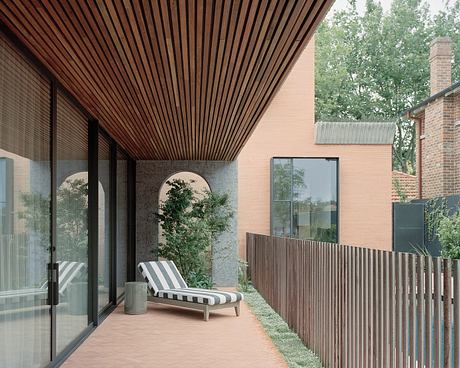
Contrasting the taut, brick skin of the bedroom pavilion, the main living space reads as an exposed skeleton of robust concrete ribs which protect the delicate interior within. The bush-hammered concrete walls form the primary structure, define the exterior and delineate the zones within. A finely detailed interior composed of travertine, American oak and polished plaster walls offer relief and contrast to the raw, heavily textured concrete.
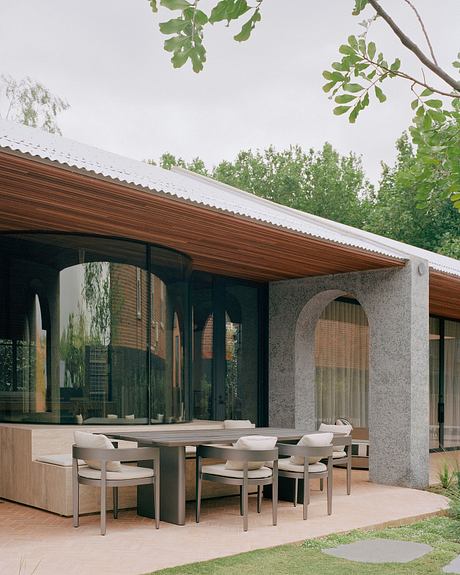
Deep Eaves Mediate Light And Curate Views
The living pavilion is oriented to the northern aspect with the primary glazing set deep into the form, creating a deep eave which mediates the light, and curates views out towards the central garden and pool. Operable windows on either side of the pavilion provide for excellent cross ventilation whilst hard wearing, raw materials are used throughout, ensuring the house ages gracefully and requires little maintenance.

Integrated Planters Cut Into The Built Form
Landscape is interwoven into the plan, with integrated planter boxes, cutting into the built form and carefully curated openings establishing a strong dialogue and connection with the garden. The home presents as a sculptural addition to the eclectic streetscape, it’s abstract façade providing little indication of what lies within where a series of communal and private spaces are linked by their celebration of form and material.
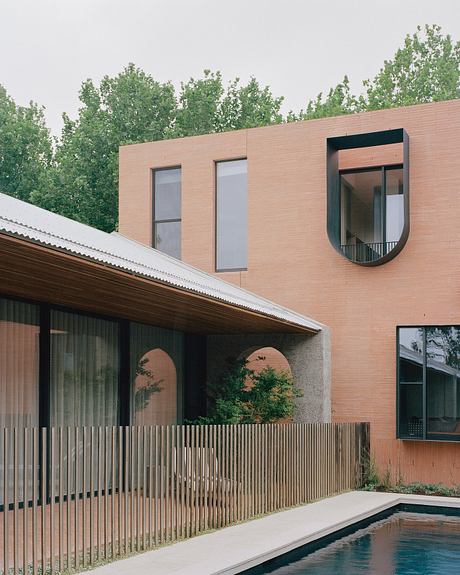
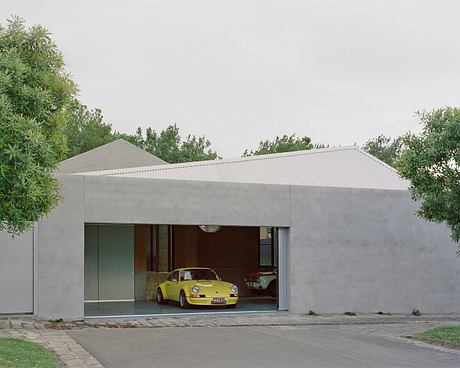
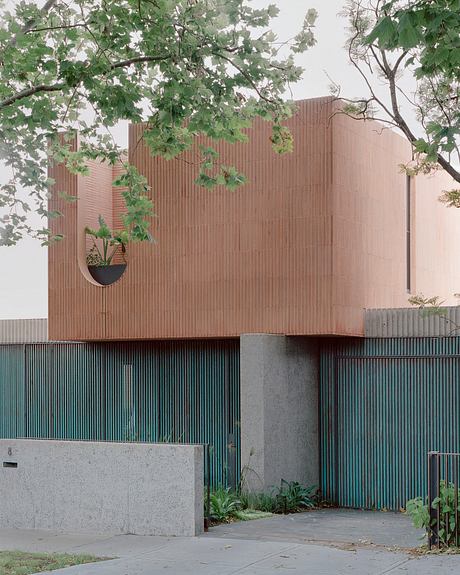
Photography by Rory Gardiner
Visit Pandolfini Architects

